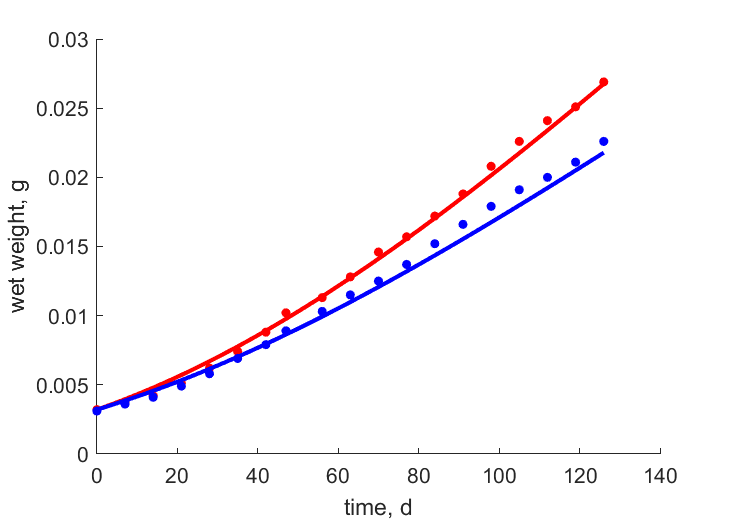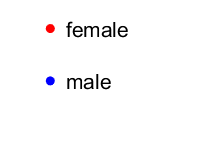| Data | Observed | Predicted | (RE) | Unit | Description | Reference |
|---|
| ab | 35 | 35 | (2.691e-06) | d | age at birth | ADW |
| tp | 400 | 389.8 | (0.02557) | d | time since birth at puberty | ADW |
| am | 1500 | 1500 | (6.17e-05) | d | life span | ADW |
| Lb | 0.32 | 0.3064 | (0.04259) | cm | total length at birth for female | Donk1992 |
| Lbm | 0.31 | 0.2913 | (0.0602) | cm | total length at birth for male | Donk1992 |
| Lp | 1.4 | 1.485 | (0.06083) | cm | total length at puberty for female | Donk1992 |
| Lpm | 1.2 | 1.413 | (0.1773) | cm | total length at puberty for male | Donk1992 |
| Li | 1.9 | 1.742 | (0.08331) | cm | ultimate total length for female | Donk1992 |
| Lim | 1.7 | 1.655 | (0.02647) | cm | ultimate total length for male | Donk1992 |
| Wwb | 0.4 | 0.4422 | (0.1055) | mg | dry weight at birth for female | Donk1992 |
| Wwbm | 0.4 | 0.3751 | (0.06228) | mg | dry weight at birth for male | Donk1992 |
| Wwp | 50 | 50.38 | (0.007523) | mg | dry weight at puberty for female | Donk1992 |
| Wwpm | 45 | 42.77 | (0.04947) | mg | wet weight at puberty for male | Donk1992 |
| Wwi | 83.4 | 81.25 | (0.02579) | mg | ultimate wet weight for female | Donk1992 |
| Wwim | 63.4 | 68.76 | (0.08455) | mg | ultimate wet weight for male | Donk1992 |
| Ri | 0.26 | 0.2604 | (0.001365) | #/d | maximum reprod rate | ADW |



